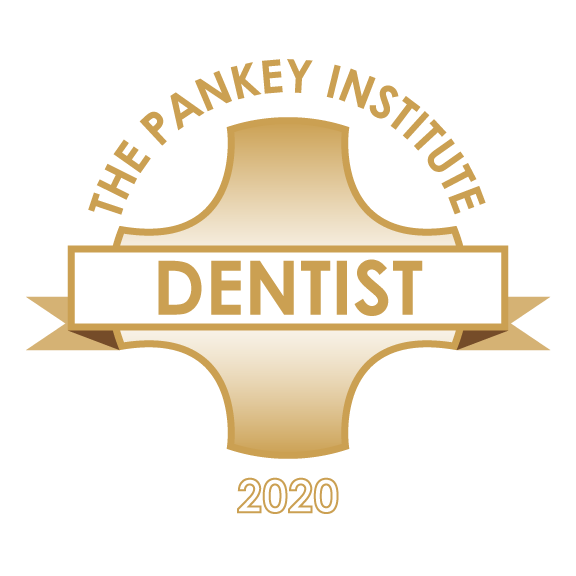

 Wonderful and caring staff; they make effort to know me personally and take as much time as is needed to thoroughly address my needs. My dentistry issues are difficult, but the staff at this office continues to exceed my expectations, regardless of the challenge!
Wonderful and caring staff; they make effort to know me personally and take as much time as is needed to thoroughly address my needs. My dentistry issues are difficult, but the staff at this office continues to exceed my expectations, regardless of the challenge!
Laura Barkdull

Restorative Dental Care
At our office, restorative dental care has its own unique applications. Dedicated to technical excellence and 36 years of restorative expertise, Dr. Cooke has spent his career mastering the art of restorative dental care. Taking into consideration all of the factors necessary for proper function and aesthetics, each patient is comprehensively assessed and a restorative treatment plan is developed based on individual needs. Complete understanding of the condition of each patient's oral and general health becomes the fundamental component that dictates which specific restorative procedures may be needed.

Dental Crowns
Dental crowns are tooth shaped restorations that are placed over a tooth after careful preparation and precise impressions. They fully encase the visible portion of a tooth that lies above the gum line. Dental crowns restore severely worn or fractured teeth, as well as support teeth that have been previously restored with large restorations. Crowns are fabricated in or in-house dental laboratory and custom fit to each individual tooth requiring this type of restoration. Dental crowns are made of porcelain, metal alloys or a combination of these two types of dental materials after individual evaluation of each patient's occlusion (bite).
Dental Inlays/Dental Onlays
A dental inlay is a specific type of restoration custom made in our in-house laboratory to fit inside the contours of a carefully prepared tooth. By contrast, a dental onlay extends over one or more sides of a tooth, covering the cusps. Inlays and onlays require less tooth removal than a dental crown and are far more durable and aesthetically pleasing than dental fillings (amalgam, composite) and are made of the same types of materials used to fabricate dental crowns. Similar to dental crowns, inlays and onlays increase strength and longevity and offer protection for each tooth requiring this type of dental restoration.
Dental Bridges
A dental bridge is a lab fabricated restoration used to replace missing teeth. It is made up of dental crowns on the teeth on either side of the missing tooth (abutments) and a replacement tooth in between (pontic). Fixed dental bridges are cemented permanently in to place and are made of porcelain, metal alloys or a combination of these types of dental materials. Natural teeth, dental implants or a combination of natural teeth and dental implants can be used to support the bridge as abutments. Fixed dental bridges help restore the ability to properly chew and speak, maintain the shape of the face and prevent teeth from shifting out of position when there are areas of missing teeth in the oral cavity.
Dentures (Complete or Partial)
When a dental patient has lost some or all of their natural teeth from decay, injury or periodontal disease (gum disease), dentures are the restoration available to restore the missing teeth. Complete dentures cover your entire upper or lower jaw when all of the natural teeth have been lost. Partial dentures replace one or more missing teeth and are attached on to natural teeth by specific types of clasps or precision attachments. Dentures are fabricated in laboratories after careful impressions are taken specific to this type of dental restoration. Advances in dentistry have improved the aesthetics, comfort and function of dentures. When appropriate, dental implants can be used as a support for specific types of dentures (See Section on Implant Supported Dentures).
Tooth Colored Restorations
This type of dental restoration is often referred to as a composite restoration. Composite restorations are a mixture of glass or quartz filler in a resin medium that is bonded to the remaining structure of a tooth when a portion of the tooth has been damaged by injury, fracture or decay. Composite restorations provide durability and resistance to fracture in small to mid-size loss of tooth structure that is required to withstand moderate chewing pressure. Since their inception in the late 1960's, composite restorations have undergone continual improvements in color, stability, durability and aesthetic properties. They are available in a variety of shades and can be matched to your individual tooth color. Tooth colored restorations (composite resins) are available for use in both anterior (front) and posterior (back) teeth.
Full Mouth Reconstruction
Complete reconstructive treatment procedures are necessitated when multiple, severely worn or fractured teeth are found bringing about a lack of health, comfort, function or displeasing appearance of a patient's mouth. Often times these procedures can be segmented in multiple treatment phases. However, as is always Dr. Cooke's approach, complete case planning is accomplished and each phase of treatment is completed using the final "blueprint" as a guide.
These cases often involve reconstruction of both upper and lower teeth to re-establish proper occlusion (bites). Generally, these cases involve both anterior (front) as well as posterior (back) teeth.






